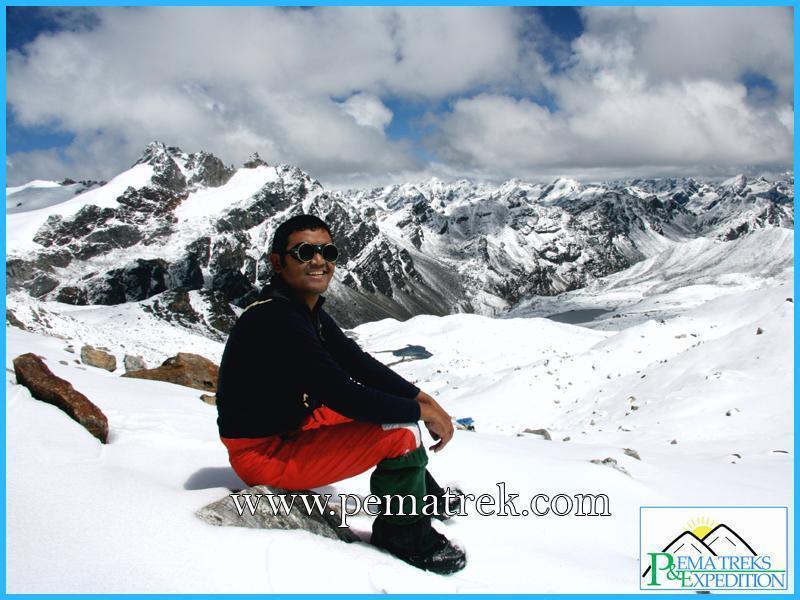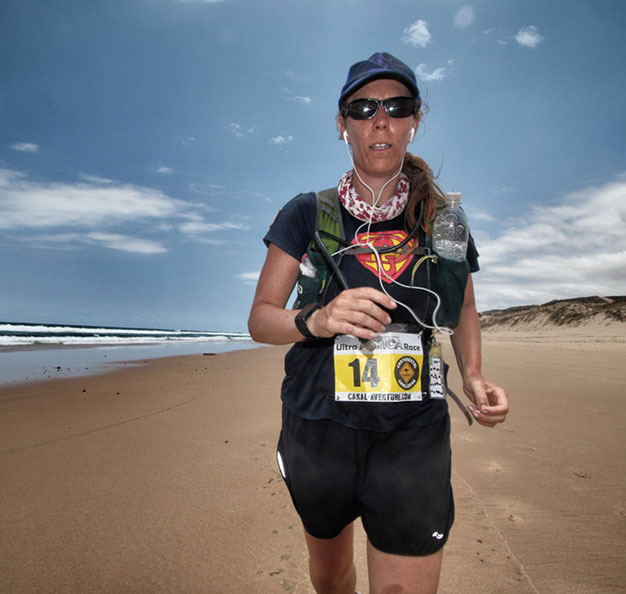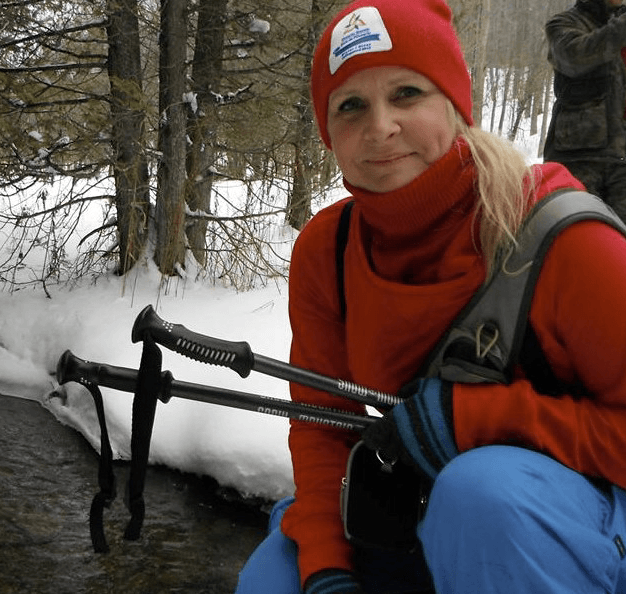As of this writing, Pema is the only trek leader who has personally walked every kilometer of the Great Himalaya Trail (GHT) "the highest feasible trekking route going from the eastern border of Nepal to its western border."
Pema was born in the low Solu Khumbu village of Hill, the fourth of ten children. When he was 16 years old he saw many trekkers going through his village and felt called to join them on their journey. His parents were reluctant, since they had never been involved with trekking themselves. One day he went down to the marketplace and found a trekking group there; he asked if he could get a porter job with them, and joined them on the way to Mera Peak
He had no trekking equipment, no shoes, and no warm clothes, so was sent back and paid in chocolate, a t-shirt and a few pencils given to him by the trekkers. He returned to his village and gave the little bit of money he had earned to his parents, who were very happy and gave him permission to pursue his dream. He headed off to Kathmandu and spent two years working as a porter, advanced to being a kitchen assistant for a year, then was promoted to being a camping Sherpa for two years.After that he became a trekking cook (one of the most responsible positions on a crew), obtained climbing training and became a climbing guide. For five or six years he led individual private groups, and started Pema Treks as an incorporated business in 2008.

For Information on Pema Treks: https://pematreks.com

When Robin Boustead was looking for a trek leader for the GHT project he chose Pema. Robin conceived the Great Himalaya Trail as a way to decrease environmental strain on over-used sections of Nepal bring the benefits of Eco-tourism to more remote areas and connect previously isolated villages. Until this expedition, most trekking in Nepal would head for one specific destination, travel north up a valley to the higher mountain areas and then retrace their way south. There were no clearly mapped trails which ran throughout the high mountains from east to west. In heading to Kanchenjunga in the east and then staying as high as possible as they traveled to the western border, Pema and Robin were often in areas known only to local people and had to rely on finding local shikari (hunter-gatherers) who could show them a way known only to them which connected previously isolated trails. Robin used GPS to map the route, relying on Pema and his crew to communicate with the shikari, blaze trails where forest and jungle obscured the way, secure fixed ropes and get the crew (and trekkers) over the technical portions of the high passes, and find local food sources when supplies ran short. As a result of their work, the Great Himalaya Trail.
- 2003 - Basic Mountaineering Training (Nepal Mountaineering Association, Alpine Association of Slovenia)
- 2006 - Basic Mountain Rescue and First Aid (Nepal Mountaineering Association)
- 2007 - International Advanced Course in Mountain Medicine and Rescue (Institute de Formation et de Recherche en Medicine de Montagne, IFREMMONT)
- Member, Nepal Mountaineering Association since 2005
- Member, Trekking Agenciesâ™ Association of Nepal (TAAN) sine 2009



